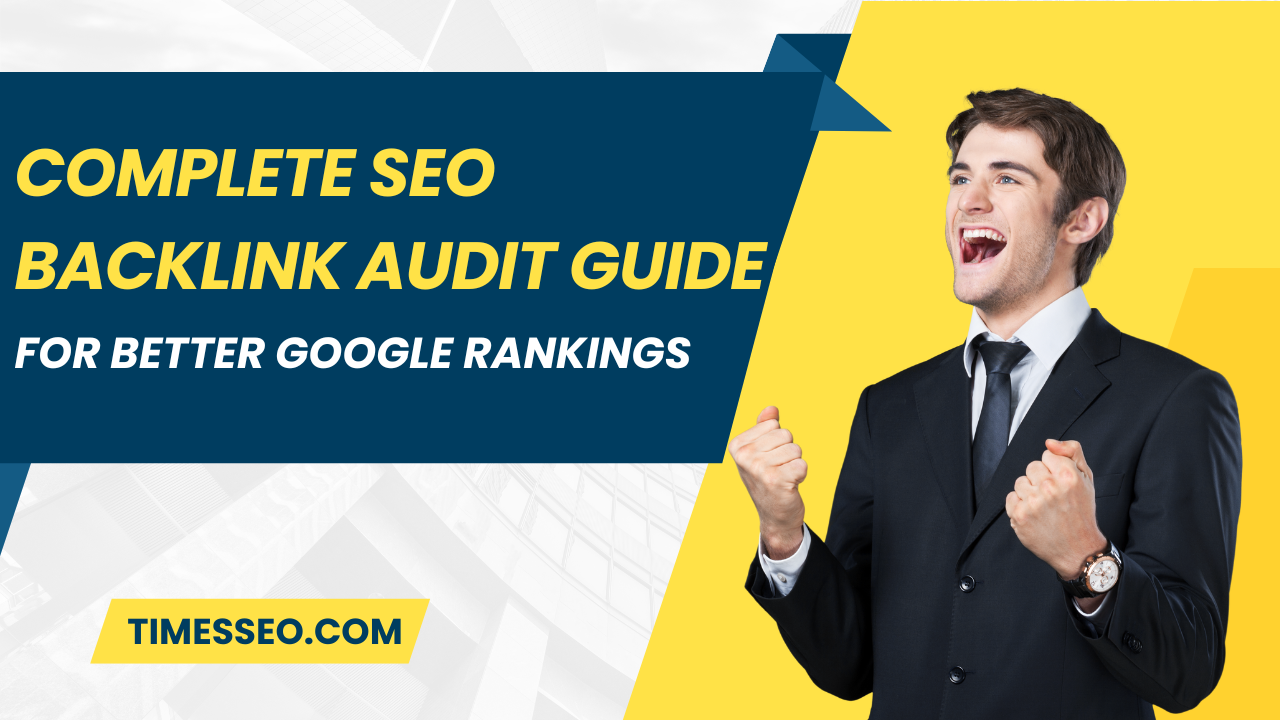
Ecommerce SEO Audit for Small Online Retailers
Unlock the full potential of your online store with this step-by-step ecommerce SEO audit tailored for small retailers. Learn how to boost visibility, fix hidden technical issues, and drive more organic traffic—without breaking the bank. Perfect for beginners and growing businesses.
Table of Contents
Introduction
Why SEO Audits Matter for Small E-commerce Sites
If you run a small online store, chances are you’re up against some tough competition. Major brands dominate search results with massive marketing budgets. So how do you stand out? Simple: a solid ecommerce SEO audit. Think of it as giving your store a full tune-up so Google (and your customers) can find your products faster and easier.
Common Challenges Small Retailers Face in SEO
Small businesses often struggle with limited time, budget, and expertise. Many end up with:
- Poorly optimized product pages
- Slow-loading mobile sites
- Confusing navigation
- Duplicate or thin content
The good news is that you can repair much of this without being a tech expert. Let’s walk through it step-by-step.
What is an Ecommerce SEO Audit?
Definition and Purpose
A thorough assessment of your online store’s search engine ranking is called an ecommerce SEO audit. It looks at how well your site is optimized, how search engines interact with your pages, and what technical issues may be holding you back.
Key Focus Areas: Technical, On-Page, and Off-Page SEO
- Technical SEO: Site speed, mobile usability, crawlability, indexation
- On-Page SEO: Meta tags, product descriptions, internal linking
- Off-Page SEO: Backlinks, domain authority, brand mentions
Benefits of Regular SEO Audits
Improve Search Visibility
Your products might be amazing—but if they’re buried on page 5 of Google, no one will ever find them. Audits help get them seen.
Increase Organic Traffic
Organic traffic means free traffic. And for small retailers, every bit counts. A well-optimized site ranks higher and brings in more visitors without paying for ads.
Catch Technical Errors Early
Broken links, slow-loading pages, duplicate titles—these errors chip away at your SEO health. Before they affect your revenue, catch them early.
Tools You’ll Need for the Audit
Google Search Console and Google Analytics
Monitor indexing, user behavior, page performance, and search queries.
Screaming Frog / Sitebulb
These tools crawl your site just like Googlebot. Spot broken links, missing tags, or crawl depth issues.
Ahrefs / SEMrush / Ubersuggest
Use them to analyze backlinks, keyword rankings, site structure, and competitor data.
GTmetrix / PageSpeed Insights
Evaluate speed, mobile performance, and Core Web Vitals—essential for SEO.
Step-by-Step Ecommerce SEO Audit Guide
1. Crawl Your Site
Run a crawl using Screaming Frog or Sitebulb.
Find Broken Links and Redirects
Fix 404 errors and chains of redirects—they waste crawl budget and kill user experience.
Detect Duplicate Pages or Thin Content
Keep an eye out for nearly duplicate category pages or product descriptions. Google hates redundancy.
2. Check Indexing and Crawlability
Inspect Robots.txt and XML Sitemap
Make sure your robots.txt isn’t blocking important pages and your sitemap is submitted to Google.
Review Google Search Console Coverage Report
Look for “Crawled – not indexed” or “Discovered – not indexed” pages and address why they aren’t appearing in search.
3. Analyze Site Structure and URL Optimization
Use SEO-Friendly, Readable URLs
Example:
/shop/mens-black-leather-shoes
Not:
/product?id=321&cat=8
Ensure Proper Product Category Hierarchy
Keep categories intuitive:
Men’s Shoes > Home > Black Leather.
4. Review On-Page SEO
Title Tags and Meta Descriptions
Each page must have a unique title and compelling meta description using relevant keywords.
Header Tags (H1, H2, etc.)
Use one H1 per page (usually the product name), and support with H2/H3s for features, specs, etc.
Product Descriptions and Schema Markup
Write original product descriptions. Use schema markup (JSON-LD or microdata) for products, prices, reviews, etc.
5. Evaluate Page Speed and Mobile Usability
Optimize Images and Minimize Code
Compress images. Use lazy loading. Minify HTML, CSS, and JavaScript.
Check Core Web Vitals on Mobile
Focus on:
- LCP (Largest Contentful Paint)
- FID (First Input Delay)
- CLS (Cumulative Layout Shift)
6. Internal Linking and Navigation
Use Breadcrumbs and Related Products
They improve crawl paths and user experience. Plus, they often show up in rich snippets.
Maintain a Flat Link Structure
Keep important product and category pages close to the homepage—no more than 3 clicks deep.
7. Backlink Profile and Off-Page SEO
Check Domain Authority
Use Moz or Ahrefs to see your domain authority and compare it with competitors.
Identify Toxic or Low-Quality Backlinks
Disavow spammy links from shady domains. They hurt your trust with Google.
8. Review Local SEO (if applicable)
Set Up and Optimize Google Business Profile
If you have a physical store or offer local delivery, claim and optimize your GMB listing.
Add phrases like “buy women’s handbags in [City]” for geo-targeted visibility.
Common SEO Mistakes in Small Ecommerce Sites
Ignoring Image SEO
Name your images descriptively (blue-cotton-shirt.jpg), use alt text, and compress them.
No Structured Data for Products
Without schema, your listings miss out on rich results (like stars, price, availability).
Poor Mobile Navigation
Hidden menus, oversized buttons, and slow mobile performance destroy your rankings.
Duplicate Title Tags and Meta Descriptions
Don’t copy and paste; each page needs its own meta tag combination!
How to Prioritize and Fix Issues
Create an SEO Audit Checklist
List tasks under categories: Technical, On-Page, Off-Page.
Rank Issues by Impact and Effort
Fix what’s easy and effective first. Example: fixing broken links is high impact, low effort.
Track Fixes in a Spreadsheet or Project Tool
Use Trello, Notion, or Google Sheets to monitor progress and assign tasks.
Measuring the Impact of Your Audit
Monitor Organic Traffic Growth
Check traffic sources in Google Analytics. Is organic growing?
Track Keyword Rankings
Use Ahrefs, SEMrush, or Ubersuggest to monitor your target keywords.
Analyze Revenue from Organic Channels
If revenue from organic is up, your audit is working.
Ecommerce SEO Best Practices to Follow
Use HTTPS Everywhere
Google rewards secure sites. HTTP is outdated and insecure.
Optimize for Site Search
Use autocomplete, filters, and SEO-friendly search result pages.
Always Write Unique Product Descriptions
Don’t copy from manufacturers. Make it original to avoid duplicate content penalties.
Conclusion
A proper ecommerce SEO audit isn’t optional—it’s essential. Especially for small online retailers trying to compete in a crowded space. From crawling your site to fixing mobile usability, every step you take boosts visibility, rankings, and ultimately… sales. Don’t wait for traffic to magically show up. Go audit, fix, and win.
Frequently Asked Questions
At least every 3–6 months. Also, run a mini-audit after major site updates or product launches.
Limited time and budget. But many SEO wins come from consistency, not complexity.
Yes, tools like Google Search Console, Screaming Frog (free version), and Ubersuggest offer powerful insights for small sites.
Monitor organic traffic, bounce rate, keyword rankings, and conversion rate from search.
Not necessarily long—but they must be unique, helpful, and keyword-optimized. Focus on quality over length.
Table of Contents
Popular Posts
-
 Affordable Technical SEO Audit for Small Business: A Complete Guide26 Jun 2025 Blog
Affordable Technical SEO Audit for Small Business: A Complete Guide26 Jun 2025 Blog -
 How to Get an Affordable Technical SEO Audit for Small Business27 Jun 2025 Blog
How to Get an Affordable Technical SEO Audit for Small Business27 Jun 2025 Blog -
 The Ultimate Local SEO Audit Checklist for Startups28 Jun 2025 Blog
The Ultimate Local SEO Audit Checklist for Startups28 Jun 2025 Blog -
 Local SEO Audit Checklist for Startups: A Beginner’s Guide28 Jun 2025 Blog
Local SEO Audit Checklist for Startups: A Beginner’s Guide28 Jun 2025 Blog -
 Top On-Page SEO Audit Steps for Service Websites Every Business Should Know29 Jun 2025 Blog
Top On-Page SEO Audit Steps for Service Websites Every Business Should Know29 Jun 2025 Blog -
 Technical SEO for WordPress: The Ultimate Beginner’s Guide01 Jul 2025 Blog
Technical SEO for WordPress: The Ultimate Beginner’s Guide01 Jul 2025 Blog -
 The Impact of On-Page SEO Audit Steps for Service Websites on UX01 Jul 2025 Blog
The Impact of On-Page SEO Audit Steps for Service Websites on UX01 Jul 2025 Blog -
 Technical Mobile SEO Audit Tips for Developers02 Jul 2025 Blog
Technical Mobile SEO Audit Tips for Developers02 Jul 2025 Blog -
 Complete SEO Backlink Audit Guide for Better Google Rankings03 Jul 2025 Blog
Complete SEO Backlink Audit Guide for Better Google Rankings03 Jul 2025 Blog -
 Boost Your Rankings with Technical SEO for WordPress01 Jul 2025 Blog
Boost Your Rankings with Technical SEO for WordPress01 Jul 2025 Blog






